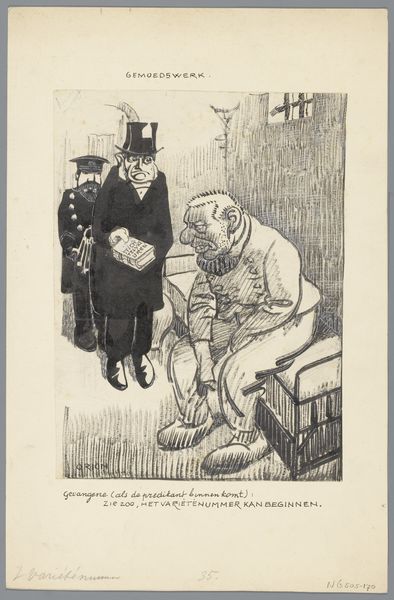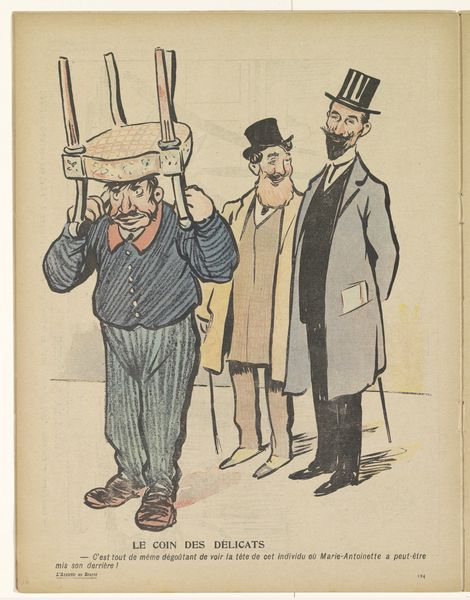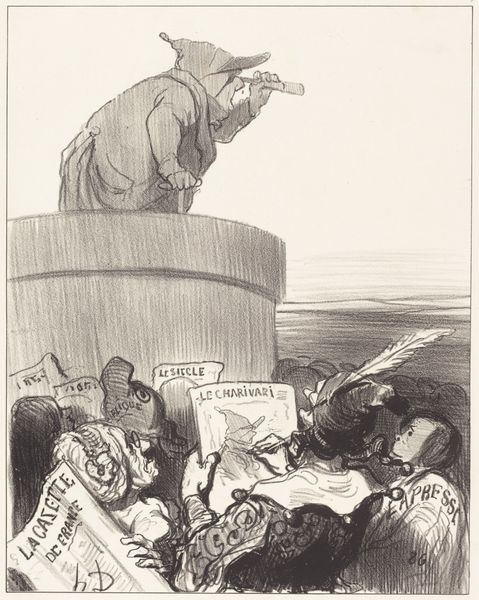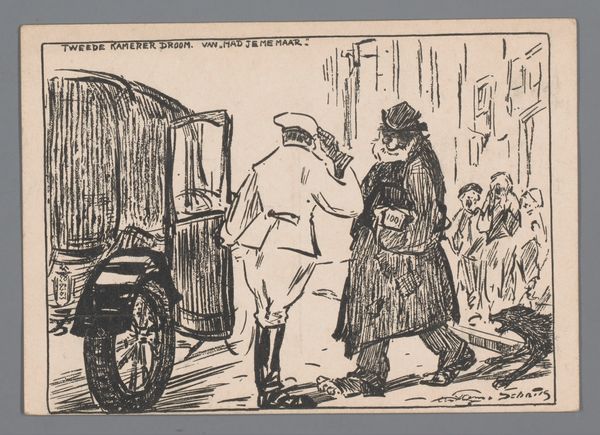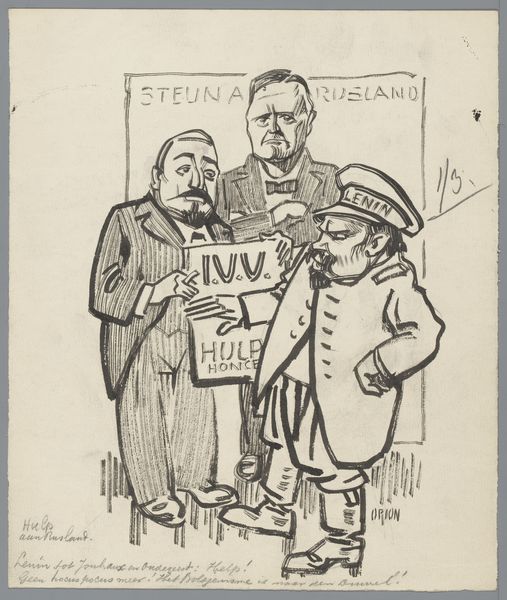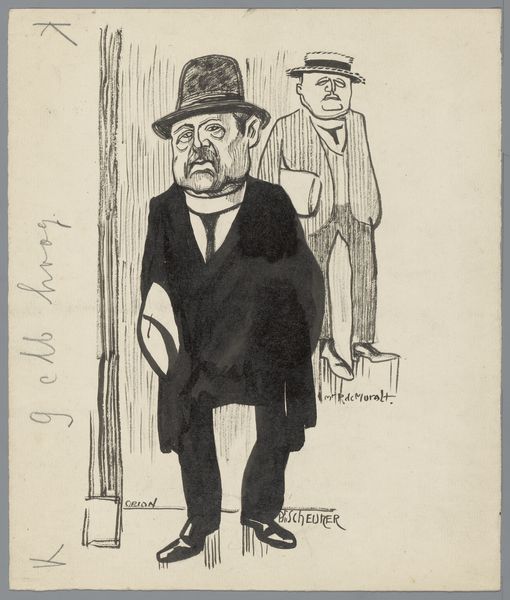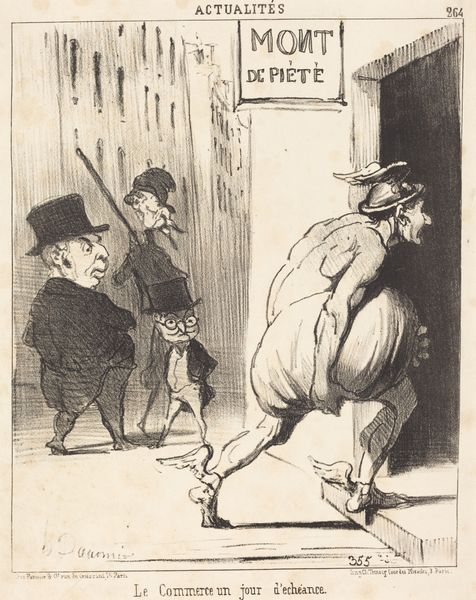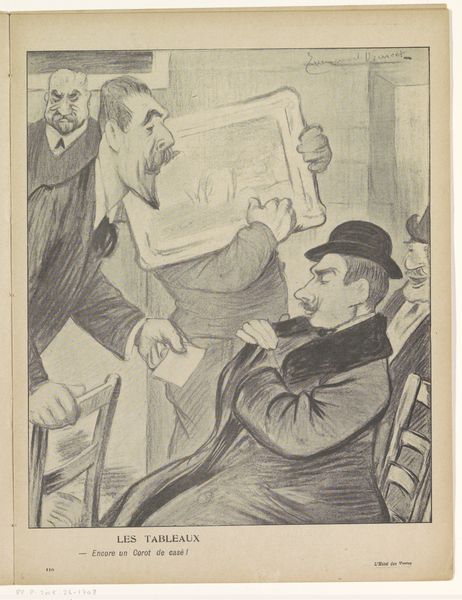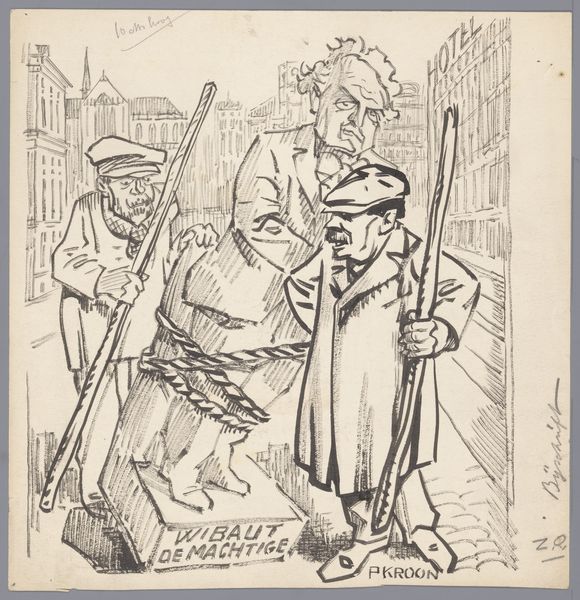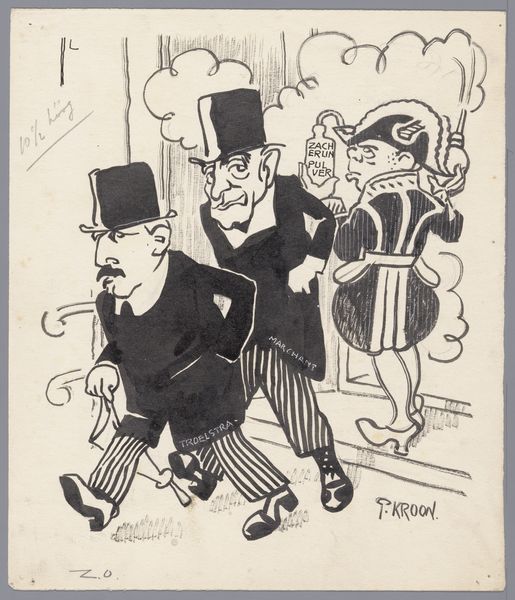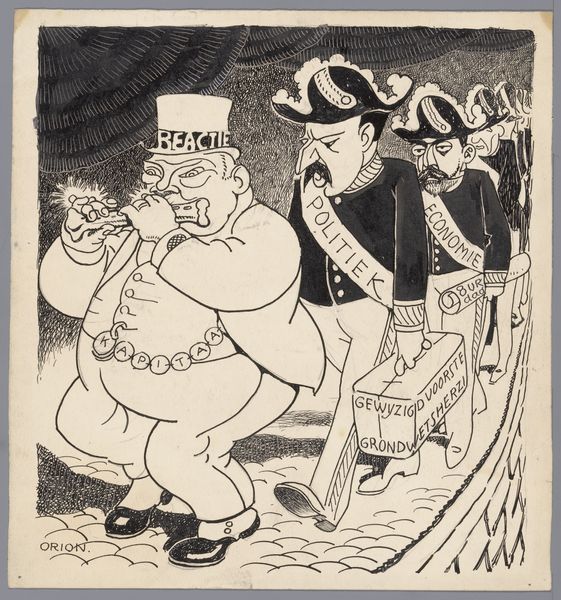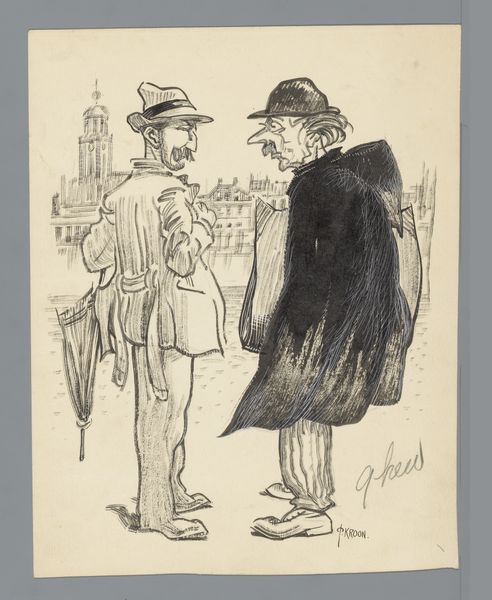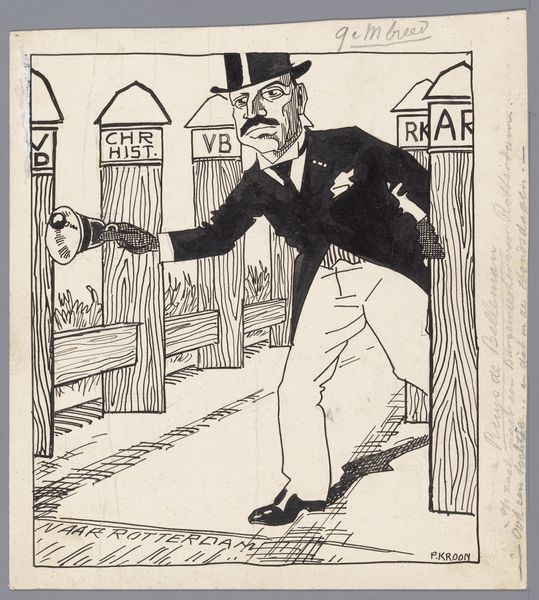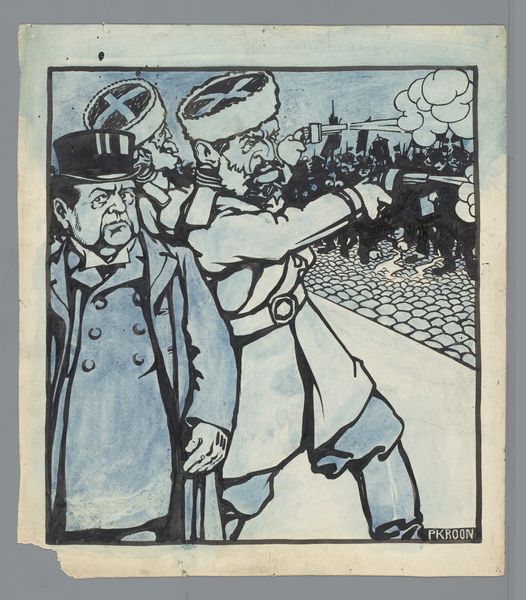
drawing, ink
#
drawing
#
narrative-art
#
caricature
#
figuration
#
ink
#
modernism
Dimensions: height 270 mm, width 212 mm
Copyright: Rijks Museum: Open Domain
Curator: The stark contrasts in this drawing certainly grab you right away, wouldn't you agree? Editor: Absolutely. It's very pointed, the way the worker is shoveling money out of a treasure chest while these suited figures loom over him. There's a real sense of tension. But let's give our listeners some context. This ink drawing, titled "Arbeider schept geld uit de schatkist", which translates to "Worker Scooping Money from the Treasury", is by Patricq Kroon and dates somewhere between 1900 and 1940, exhibiting a certain modernist leaning in its composition. Curator: Placing it then at a pivotal moment. You have this period brimming with socialist movements, workers’ rights becoming a central point of discourse. This image becomes potent in that light – the visual representation of labour essentially emptying the coffers under the watchful eye of capital. There’s something intrinsically radical about depicting the power dynamics so openly. Editor: It makes you consider who controls access, and who benefits. I notice the faceless nature of the buildings in the background as well; very much an anonymized industry. It creates a powerful visual shorthand, condemning industrial structures of power and control through his art. What does labor owe capital, and vice versa? I feel the drawing posits this relationship in such striking fashion. Curator: Exactly, this is an appeal not just to sympathy but a visual argument for structural change, challenging established hierarchies, laying bare a narrative of possible exploitation while envisioning agency to those from the lower classes to be involved and empowered in their own socioeconomic status, and the way to take control of it and exercise freedom in it, which leads to reflection. I do find it optimistic on one level, showing this idealized scene that encourages progress in all echelons. Editor: Looking at it through a wider art history lens, I also feel that we should ask questions. The socio-political context shapes our perception and the way such concepts influence his artistic practice. Curator: True, it allows us to trace the transformation in representations of labor through time and in relation to ever-changing socioeconomic systems and conditions. I think we need art like this. Editor: It reminds us that the struggle continues, even as the landscapes and the players evolve.
Comments
No comments
Be the first to comment and join the conversation on the ultimate creative platform.
